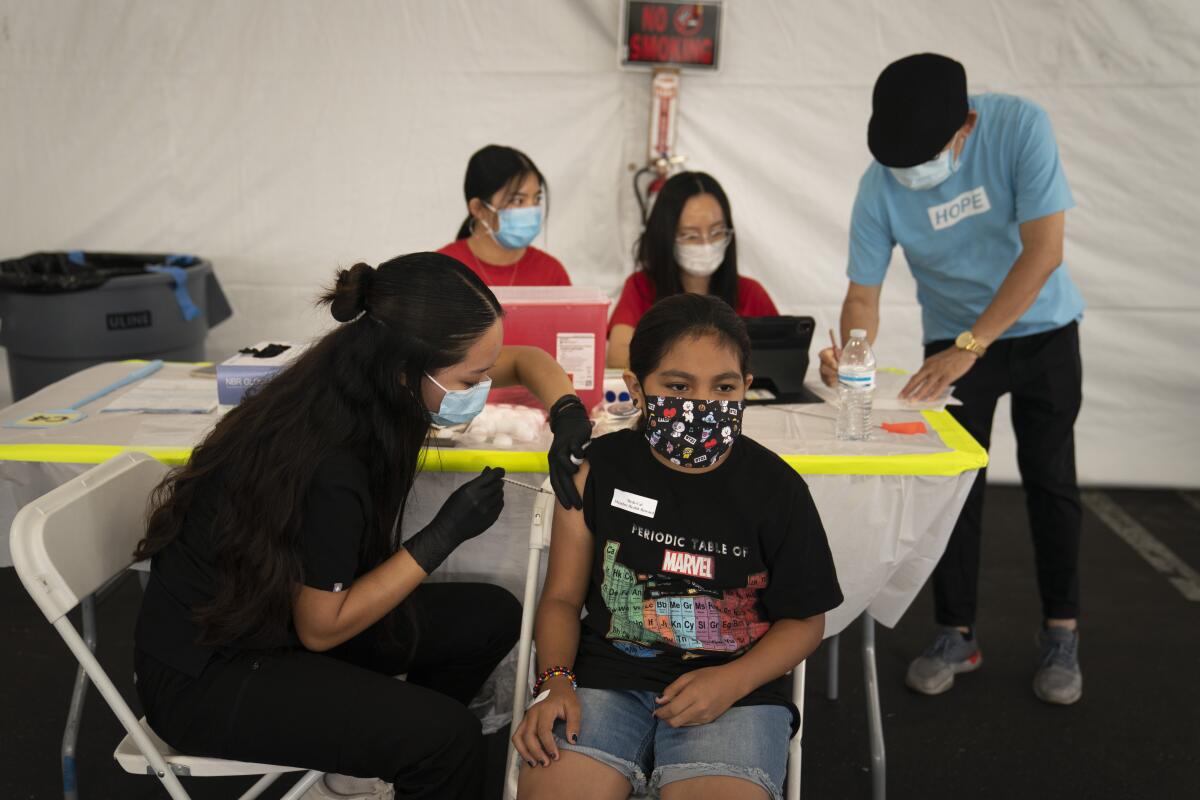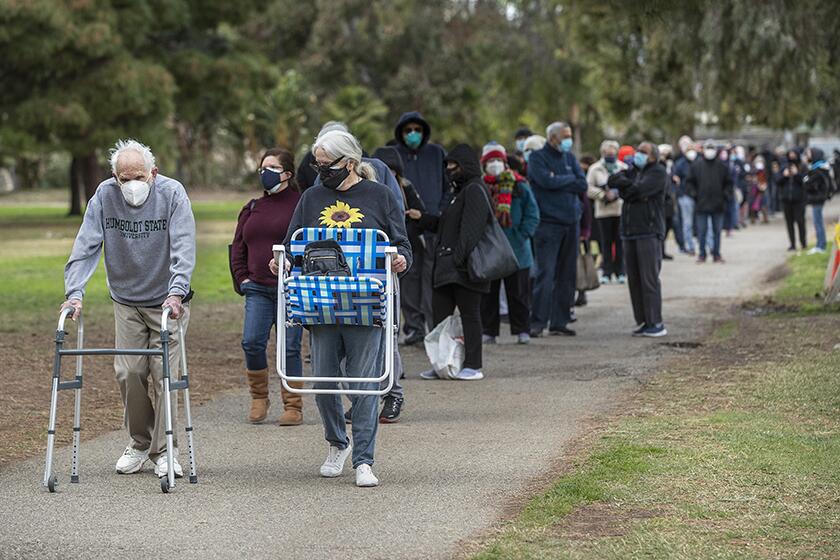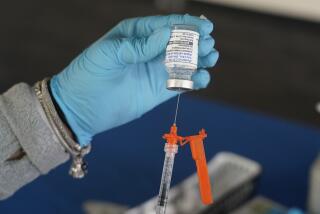Say what? Public health leaders must improve their messaging on the pandemic

- Share via
Heading into the third winter since COVID-19 emerged in the U.S., public health leaders have an abundance of information about the deadly virus. How it spreads and how to stop it. What they haven’t yet figured out is how to communicate this information effectively.
For weeks, public health leaders have been encouraging people to get the latest booster shot. But only a minuscule number of people have heeded the recommendation, with about 9% of Los Angeles County residents getting the updated shot, slightly higher than the national average.
Clearly, the guidance isn’t getting through, but it doesn’t have to be that way. Health specialists should remember that trusted voices are at the heart of any successful information campaign.
Mixed messages about the coronavirus from top policymakers throughout the pandemic haven’t exactly inspired confidence. The House Select Subcommittee on the Coronavirus Crisis last month released a report detailing how the Trump administration downplayed the risk of the pandemic to the point of attacking scientists providing accurate information. And there have been recent blunders. Rochelle Walensky, head of the Centers for Disease Control and Prevention, downplayed masking earlier this year even as the agency was recommending this as a preventive measure. President Biden’s statement in September that the pandemic is over was widely lambasted as premature and counterproductive.
The virus is still claiming more than 400 American lives every day. That’s unacceptable. The fight must continue.
These high-profile missteps have muddied communication, but policymakers can move forward by taking cues from successful public health campaigns that have helped reduce COVID infection rates in the past.
Officials should consider making tailored efforts to reach specific communities. For instance, they should once again send “promotoras” into Latino communities disproportionately affected by the coronavirus. These Spanish-speaking community health workers have proved to be trusted messengers, and helped inform Latinos about the importance of testing and vaccinating at the height of the pandemic. Latinos in June 2020 were five times more likely to die from COVID-19 than white people, according to a KFF analysis.
The disproportionate effect of the coronavirus on Latinos and other people of color prompted state policymakers to allocate $17.3 million to more than 110 community-based organizations focused on underserved communities in California. Targeted vaccination campaigns have proved effective, helping reduce Latino death rates. Also, outreach efforts should focus on other communities still suffering a disproportionate number of COVID-related deaths, including lower-income, Pacific Islander and Black people.
Two years ago, the president declared a state of emergency to deal with the emerging threat of COVID-19. Now is the right time for authorities to begin the necessary examination of our state and national response to the novel coronavirus.
Policymakers should also consider reviving health campaigns creating awareness about the higher risk of coronavirus transmissibility in certain sectors such as food service and retail industries, which get busier during the holiday season. The COVID Workplace Outreach Project was another effort to address the dangers faced by workers in these industries. Such messaging can help remind employers, workers and the public of the importance of vaccinating, testing and masking to help prevent illnesses and keep businesses running smoothly.
Gov. Gavin Newsom has called for an end to the COVID-19 state of emergency on Feb. 28, 2023, but indicated that certain measures such as vaccination and testing efforts will continue through the winter to maintain low levels of infection. The newly created state Office of Community Partnerships and Strategic Communications should use some of the $65 million allocated in the state budget for these targeted campaigns, considering that achieving health equity is one of the agency’s chief goals.
The tiny percentage of people getting booster shots indicates there’s much room for improvement in public health campaigns. The holiday season, which has come with surges of COVID cases the past two years, requires public health leaders to step up their messaging to the public.
More to Read
A cure for the common opinion
Get thought-provoking perspectives with our weekly newsletter.
You may occasionally receive promotional content from the Los Angeles Times.











